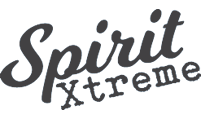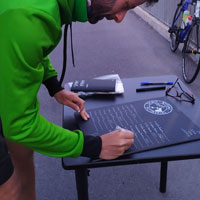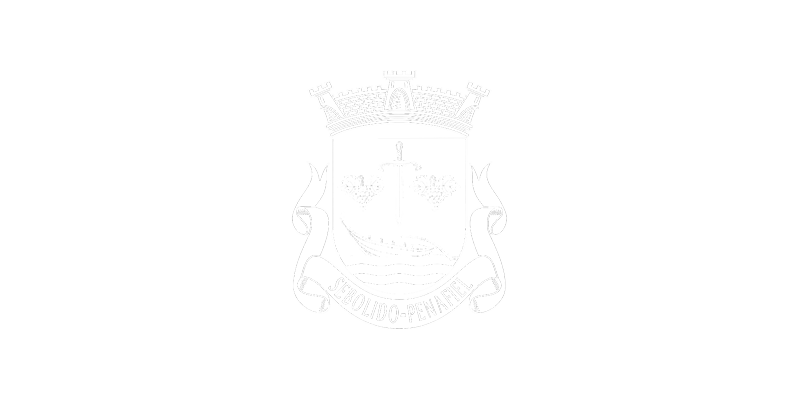Spirit Xtreme Informations
Who will be the strongest man on Earth?
Rules
The event will take place on May 10th, 2025 and will start at 7 am.
Swimming takes place at the Crestuma Dam and starts at Lixa pier, on the access ramp at the eastern end of the riverbank.
Cycling continues to Arouca, and will take the athletes to climb Serra da Freita, from there it goes to Castelo de Paiva, crosses Douro River and continues to Sebolido. There will be transition park 2 and the run takes place on Serra da Boneca slope between the river and the wind farms in the top.
The start and end of the race are approximately 12km apart.
The concept behind the Spirit Xtreme Triathlon is to hold a race in which athletes are tested on very challenging routes, both physically and mentally, so that in the end it can be determined who will win the title of The Strongest Man on Earth.
Athletes will have to swim 2km, cycle 120km, with 2300m of positive accumulation, finishing with 24,5km (15.2mi) of Trail, with 1300m (0.8mi) of positive accumulation.
Swimming will be the most normal segment, carried out in calm water and mild temperatures, what we call the calm before the storm.
Cycling has some challenging climbs, with the icing on the cake being a climb to Serra da Freita, along a 12km road, on asphalt that is not the best and which takes athletes from 300m to 1100m, in altitude.
The race is all done on Trail, on a route that varies between rolling and technical with single trecks that take athletes from the riverbed to the top of Serra da Boneca where they can enjoy a breathtaking view of the Douro River valley.
Registrations must be made between February 1st and April 15th, 2024, and are limited to 60 places.
Everyone who wants to participate must fill out a Form to pre-register for the event.
The registration of athletes is done in the order in which the Form is sent, once the 60 places are filled, the athletes are placed on the waiting list.
Registrations can be made for a single athlete to complete the entire race, or for 2 or 3 athletes to complete the race in a relay.
Cycling takes place with the road open to traffic, so athletes are obliged to circulate within the rules of the highway code.
Athletes who are caught committing any transgression will be disqualified.
The cycling route is not marked, so athletes are required to carry GPS navigation devices, which can be bicycle computers or smartphones.
The cycling route is easy to navigate, with few road change points.
The tracks will be made available to all athletes, so that they can install them on their devices and, if possible, test them. In addition to the GPS tracks, a brief description of the road change points will be made available.
The cycling has a length of 120km, with 2300m of positive accumulated.
The run will be mostly trail, on the slopes of Serra da Boneca, on an existing route, the PR5, which is marked with the symbols normally used in this type of walking route.
In addition to the official route markings, the organization will place its own signage to facilitate navigation for athletes.
The route will consist of two and half laps in the shape of a figure 8, with the center from figure 8 being the beginning, fueling and end of the run.
The athletes begin the race towards the wind turbines, along the trail that runs to the left, with the route clearly identified.
The run is done on a trail and is 24,5km (15.2mi) long, with 1300m (0.8mi) of positive accumulation.
Athletes will have to carry their own supplies during cycling, and there is only one point, at the top of Serra da Freita, where they can replenish water and some food.
For the sake of help with nutrition and also for safety reasons, it is advised that athletes have support teams.
Support teams can be made up of up to 4 people and a vehicle, which can be a motorbike, a car or a light van.
The people and vehicles that are part of the support teams will have to be identified, with material provided by the organization.
During the run, support teams will be able to help in the transition area and with fueling.
For the event to run as smoothly as possible, volunteers will be needed to help with the various tasks to support the athletes.
Athletes are asked to, in addition to the support team, also bring volunteers to help with the various event support functions (water monitoring, emergency team, photography, transport, etc.)
Volunteers will be guided by the coordinating team.
There will be two transition parks:
The FIRST (PT1) will be located in the area where the swimming will take place, which is in the town of Lixa, in access to the water of the Crestuma Dam, on the Douro River.
The SECOND (PT2) will be located in Sebolido, in the middle of the race route, in the area where the fuel supply and the finish line are located.
Support teams will be responsible for taking the racing equipment to PT2.
Athletes who do not have a support team can leave a bag with their running equipment, identified with their bib number, with the organization before the start of the race, who will take it to PT2.
The transition parks are approximately 12km apart, so at the end volunteers and support teams will transport athletes who have left vehicles at PT1.
During cycling, athletes will have to carry their own supplies, either with them on the bike or in the support vehicles, if they choose to have support teams.
There is a fueling station at the top of Serra da Freita, at km 65, where athletes can refill on water and some food provided by the organization.
If you don't have a support team, you can provide a bag with any food you want to have available mid-cycle. The bags must be properly identified with the athlete's bib number.
In the race, as the route forms a figure 8, refueling is in the middle of the running circuit, with athletes therefore having to refuel every 4km.
The organization provides water and some food to athletes at this point in the race.
Athletes who wish to have specific food and drink on the run sgment, can leave it with their supply teams or leave a bag with this food in advance within the organization, which will be placed in PT2.
Neoprene – for safety reasons, the use of neoprene will be recommended to all participants.
Bicycles - All types of bicycles with a non-assisted propulsion system can be used, therefore electric bicycles or those with some type of assistance are prohibited.
Clean Areas – the only available spot to drop water bidons, energy bar covers or any kind of garbage is within the space within 100 meters before and after the refreshment zone. It is the responsibility of the athletes' support teams to collect this waste.
Final - the party must continue until the last athlete reaches the FINAL. Everyone (athletes and volunteers) must wait for the last athlete so that they can start thinking about the time to rest.




















